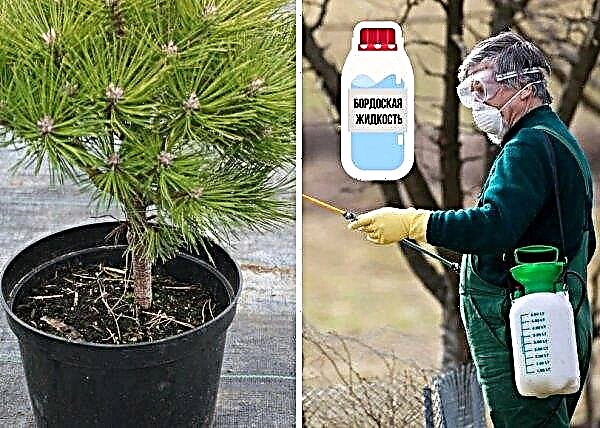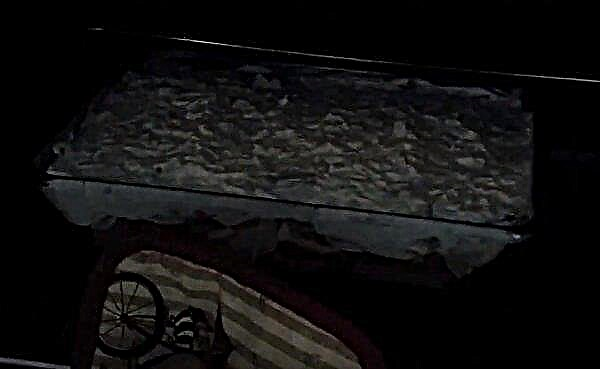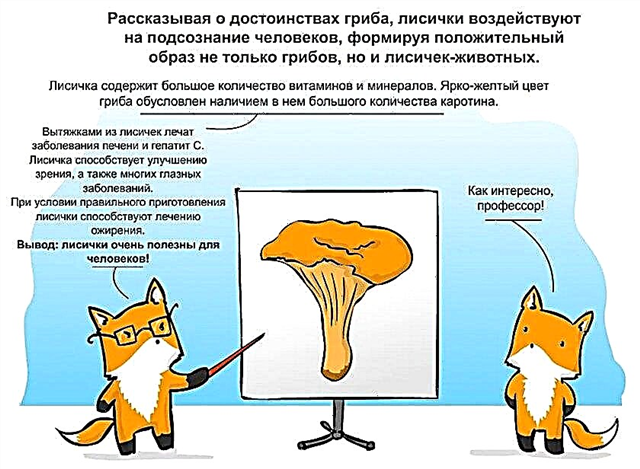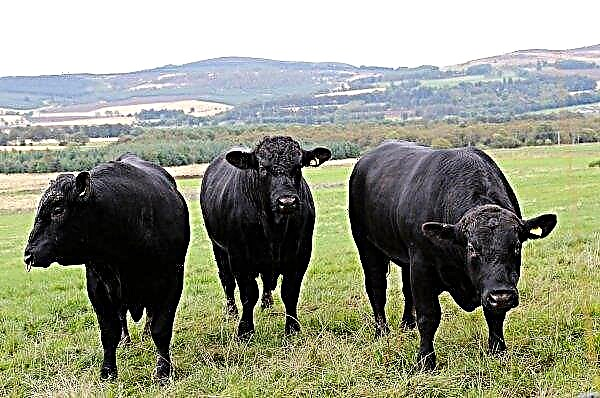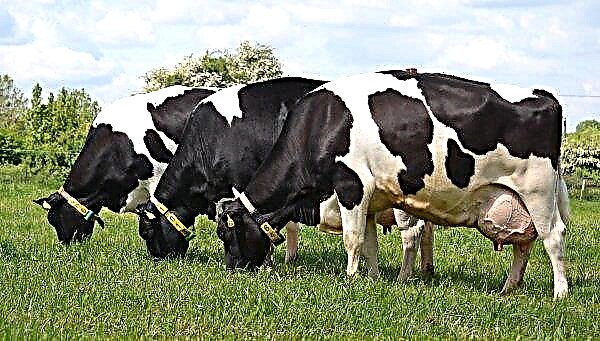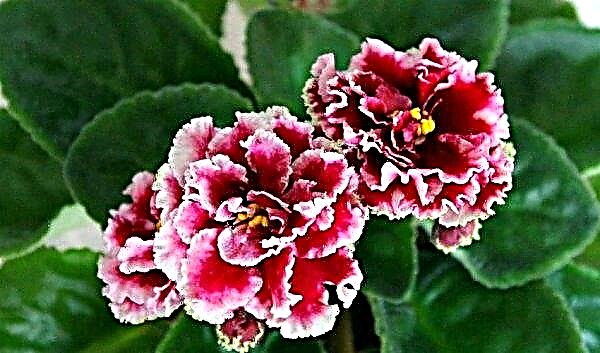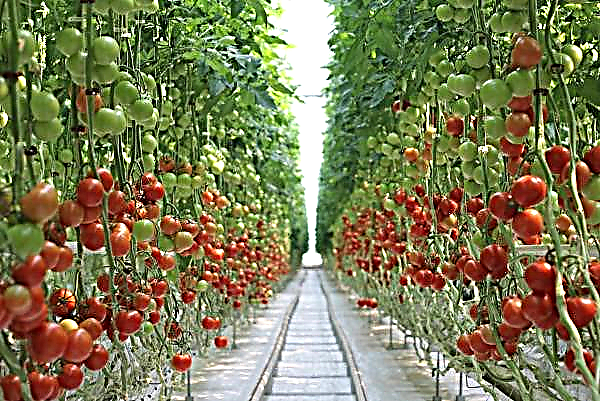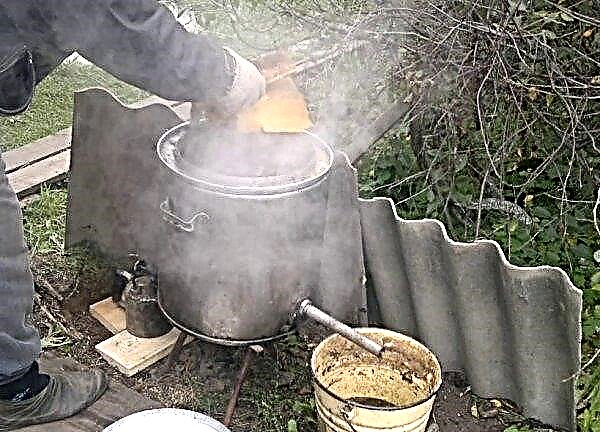From the earliest times, currants are known and popular in Russia. Her black fruits were always held in high esteem. Currants at one time was considered food only for privileged persons, whether it be noble people or monasticism. But now currants are a plant revered among gardeners - for vitamin, delicious fruits and ease of care.
Description of Blackcurrant variety Mermaid
Over the years, breeders have bred new varieties of currants that would have been more comfortable in the rather harsh conditions of the Russian climate, and would have been undemanding in soil composition and watering. One of the significant achievements of scientists is the variety Mermaid.

Selection history
The "birth" of the Rusalka variety took place in the first half of the 90s of the last century. Its creator is V.S. Ilyin was engaged in experimental work in the South Ural Research Institute of Horticulture and Potato, crossing different varieties of currants to obtain a better and more resistant plant.
Did you know? Currants grow on all continents except Australia and Antarctica.
Based on such varieties as the Seedling Doves and Bredthorpe. In 1994, state variety testing began, which lasted 10 years. And only in 2004, a new variety was introduced into the State Register of selection achievements in the Ural region. At the moment, the Mermaid variety can be grown in many regions of Russia.
Appearance, characteristics of berries, ripening time, yield
On average, the bush reaches 1.2–1.7 m in height and about 1 m in diameter. It is not prone to excessive shoot formation, has five-lobed leaves of dark green color and light pink shoots.

The mermaid begins to bloom in the middle - second half of May. Pink-tinted flowers form reminiscent of glasses. This blackcurrant variety is considered high-yielding - with good care and fertile soil, 2.5-3 kg of berries can be collected from one bush.
If fruit ripening was favored by good weather and rational fertilizer application, then Mermaid currant will be able to “give out” up to 6 kg of berries from one copy. By the timing of the appearance of the fruit, the variety is medium early - the first crop can be harvested already in mid-July. Also, the Mermaid variety is a seedless currant.
The berries themselves on the plant ripen large and juicy - with an average of 5 g, some fruits can reach a mass of 7-8 g. Black in color, have a sweet taste with a slight acidity. The aroma is pronounced, pleasant.
 Assessment on a tasting five-point scale ranges from 4.6 points to 5.
Assessment on a tasting five-point scale ranges from 4.6 points to 5.
Advantages and disadvantages of the variety
- Positive traits:
- frost resistance;
- the plant is “tolerant” of drought;
- high productivity;
- great taste;
- unpretentiousness in leaving;
- resistance to most infections and parasites.
- Of the minuses, it is necessary to mention:
- vulnerability to septoria;
- susceptible to attack by the kidney tick.
Important! As an ornamental plant, the bush of the cultivar Mermaid grows well in the shade. Therefore, if you have a darkened part of the site, you can safely plant a bush.
Agricultural technology
Currant is one of the few bushes that can comfortably feel in partial shade or shade. But if you intend to harvest a worthy crop, then you cannot do without a certain algorithm of actions.
Seat selection and landing
The place is best to choose a sunny, sheltered from strong winds. It is necessary to avoid territories with ground water close to the surface of the soil, since due to excess moisture the plant will begin to rot.

For planting, it is best to use two or three year old seedlings that already have a well-developed root system. The distance between the bushes should be at least 1 meter, the distance between the beds - 1-1.5 m. Planting time - autumn (second half of October).
Check out

After mixing the planting mixture, sprinkle a layer of earth and plant a seedling on the resulting hill. Make sure that its roots are evenly distributed over the surface of the soil.
Further, the seedling should be covered with soil so that the growth point is flush with the surface of the ridge. The first watering is carried out during planting. One bush should account for 4-5 liters of water.
After planting, cut off the upper part of the seedling, leaving only the lower leaves and buds. This will allow the plant to activate internal forces for subsequent development. The surface of the root zone of the seedling should be mulched with compost, straw, sawdust. The layer thickness should not exceed 3-5 cm.

Care
Since currant is a plant that tolerates dry weather, it is especially not necessary to water it. If one bucket of water every seven days is enough for a seedling, then adult bushes “withstand” the interval between irrigation in about 10–11 days. Only the amount of water needs to be increased to 4-5 buckets.
With the onset of spring, seedlings recommend feeding a weak solution of ammonium nitrate, at the rate of 4-5 liters per bush. Instead of nitrate, urea (urea) can be used. With the growth of seedlings, the amount of water must be brought up to 10 liters per bush.

For better pollination of the Mermaid variety, if necessary, it is recommended to spray the plant with water with several tablespoons of honey dissolved in it. It is also well attracted by bees and bumblebees, which play a huge role in pollination of berry culture, planting near meadows of bushes of honey plants - Lungwort and catnip. Even in the process of attracting beneficial insects, tulips and daffodils can “help”.
Each fall, under the bush, you need to make 4-5 kg of compost and 30 g of double superphosphate with 20 g of potassium sulfate. Mineral salts and organic compounds are advised to be placed neatly in the ground so as not to damage or burn the roots. The optimum embedment depth is 5–8 cm.
Did you know? Currant berries increase immunity, increase resistance to allergic diseases, favorably affect the condition of the skin and hair.
Trimming and shaping a bush
You need to prune the currants either in the fall, when the last crop is harvested, or in the early spring, even before the buds appear on the plant. Proper pruning of a bush of the variety Mermaid allows the plant to form a good crop and resistance to various parasites.
 Fig. 1. Currant pruning: a - annual seedling; b - a biennial bush; c, d - shortening of shoots. Fig. 2. Currant bush before anti-aging pruning (a), after it (b) and pruning of a neglected bush (c).
Fig. 1. Currant pruning: a - annual seedling; b - a biennial bush; c, d - shortening of shoots. Fig. 2. Currant bush before anti-aging pruning (a), after it (b) and pruning of a neglected bush (c).
The largest and juiciest fruits are formed on shoots that are no older than two years. Be sure to prune the old branches, which can be distinguished by the brown color of the bark. They need to be cut as close to the base as possible, otherwise pests may be created on the remaining fragments.
After trimming, you can make a rotted humus and 1-2 tbsp. Under the base of the bush. l double superphosphate. This will allow the plant to grow a large number of full-fledged shoots by next spring.
Pest and Disease Control
Danger to currants Mermaid may be powdery mildew. Its manifestation is a white coating, which first covers the leaves, and then spreads to the berries. At the first sign of infection, the plant should be sprayed with Fitosporin.

To do this, you will need to dilute 1 bottle with the drug (5%) in 10 liters of water and spray the diseased bush with the resulting solution. After the first treatment, the procedure should be repeated after another 3-4 days.
A serious threat to the plant is the terry (reversal) of black currant. The carrier of the disease is a kidney tick, and if the disease is "launched", then it will lead to infertility of the plant.
Symptoms of terry are as follows:
- first, the bush ceases to bloom and bear fruit, the characteristic smell of currant disappears;
- the leaves begin to acquire a purple color, of the five blades of the leaf plate, only three remain;
- the flowers become elongated, the petals become narrower.
 Unfortunately, the bush is not subject to treatment. If a diseased plant is found, it should be dug up immediately and then burned.
Unfortunately, the bush is not subject to treatment. If a diseased plant is found, it should be dug up immediately and then burned.
The disease can be prevented by proper care, and the soil should contain a sufficient amount of phosphorus and potassium. It is also necessary to ensure that nitrogen fertilizers are used in moderation, since it is an excess of nitrogen in the soil that reduces the plant's immunity to infection.
The kidney tick can especially damage the currant. When it appears, the shape, color and size of young leaves at the very tops of young shoots begin to change. The leaves become coarse, leathery to the touch, deformed, acquire a lighter color.

The best way to combat ticks is preventive measures - keeping the site clean, regular sanitary pruning, timely watering and fertilizing.
If you notice a bloated kidney on a plant - this is a sure sign that a tick has settled in it. Such kidneys need to be cut off from the entire bush, and then burned. For the physical destruction of the insect, you need to use the preparations “Endor”, “Neoron” or “Vertimek”.
Wintering
Preparing for winter should begin with sanitary pruning of the plant. Damaged branches should be removed, those that grow in the center of the bush or change color (blackened). Cut “under the root” diseased branches, which should be burned outside the garden. Do not cut the upper shoots on branches, since next year it will be in these areas that the bulk of the crop will be formed.
The soil of the trunk circle is mulched with a thick layer (from 10 cm) of sawdust and peat. The winter mermaid bush tolerates well, as it is a frost-resistant plant.

Harvesting and transportation of the crop, shelf life of berries
The first fruits ripen in mid-July. It is important not to miscalculate with the collection time, otherwise the berries will ripen and burst. When storing fruits at room temperature, they are suitable for food no more than 2-3 days, in the refrigerator, shelf life is extended for a few more days.
Frozen berries can be stored for up to six months without losing their taste. The fruits of the Mermaid variety are excellent for transportation, they do not crumple during transportation and retain their appearance.
Currant Rusalka for its relatively short period of existence managed to earn laudatory reviews of gardeners from all over Russia. Relative simplicity in planting, high productivity and resistance to diseases made the plant a welcome guest in more than one garden plot. And the high content of useful elements and vitamins in the pulp makes the variety an excellent prophylactic against many ailments.

